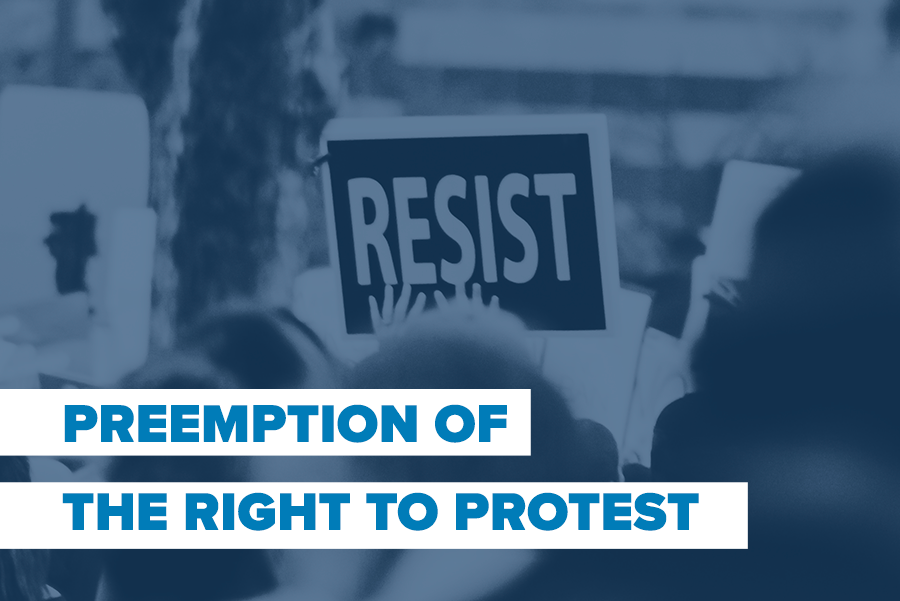Preemption of The Right to Protest
This is one in a series of LSSC toolkits aimed at providing a one-stop-shop for all of the messaging, media, legal, and research resources associated with individual issue areas that are commonly preempted. See them all here.
This document was last updated in April 2022.
Messaging 101
The right to dissent is fundamentally American and core to our values. Protests are inextricably tied to some of our most consequential moments and movements in American history.
This freedom was particularly important in recent years, as more Americans than ever before began talking about – and taking to the streets to protest – racism in America.
In response to these largely peaceful and legal protests, many states have sought to clamp down on this fundamental freedom – advancing anti-protest bills that undermine local governments and show a profound disregard for our democracy.
These bills criminalize many types of protests and threaten localities that fail to respond according to state dictates.
Perhaps the most dangerous example of these bills is Florida’s HB 1 - a racist and draconian law which criminalizes certain types of protests and undermines the ability of local communities to control their own police budgets.
More broadly, these types of bills often impose harsh felony penalties on protestors and make localities liable for damage done by protestors. Instead of allowing local governments and police to determine their response to protests in their own neighborhoods, the state is forcing localities to take action – whether the unique circumstances merit it or not.
At its core, this anti-democratic legislative strategy is about upholding systems of white supremacy and racism. These bills disproportionately affect BIPOC who have taken to the streets to object peacefully to government policies and police actions. Several of these bills even provide immunity for people who drive their cars into protests or hit protestors. You read that correctly.
Anti-protest bills are part of a larger preemption trend we’ve seen in the wake of George Floyd’s murder. State legislatures, many of which are composed of predominantly white men, seek to uphold inequitable systems by preempting the right to protest, preempting local control of school curricula and attempting to censor classroom discussions on everything from race to LGBTQ people, and preempting local control of police budgets.
Preemption has long been used as a tool to take power away from people – often, at the expense of BIPOC communities, women, LGBTQ people, and workers in low-wage industries. But the type of preemption employed over the last year – as the pandemic raged and more Americans than ever before spoke out against racism – demonstrates how state lawmakers are employing strategies that truly can harm the health and safety of protestors and undermine basic rights enshrined in our Constitution.
Media Examples
Lawmakers Push For Protest Restrictions In The Year Since George Floyd's Killing | NPR, 5/24/21
Opinion: Anti-protest legislation undercuts our liberty | Gainesville Sun, 3/22/21
Opinion: Gov. DeSantis prioritizes politics over COVID relief | South Florida Sun Sentinel, 1/22/21
Legal Resources
Anti-Protester Legislation & Preemption: An Overview | Local Solutions Support Center, September 2020
State Legislatures Make “Unprecedented” Push on Anti-Protest Bills | The Intercept, 1/21/21

